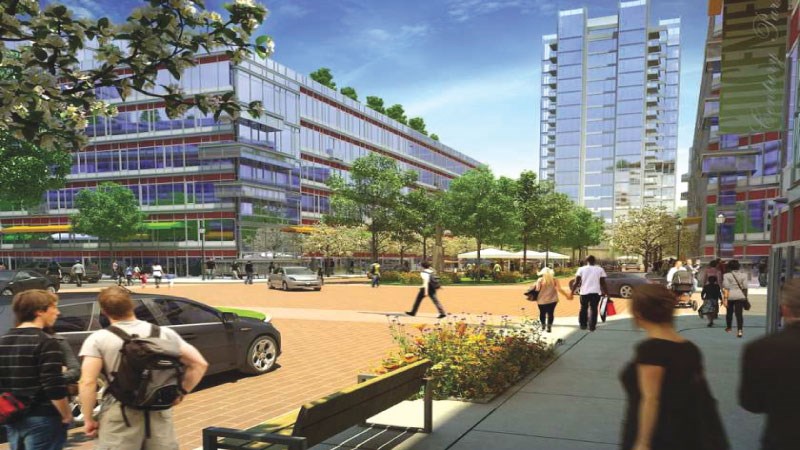Real estate developers are bucking the headwinds in the two Canadian provinces most vulnerable to oil prices – apparently confident that this will be a year of recovery.
The optimism in big-city Alberta and Saskatchewan may not be misplaced, as the price of oil has rallied above US$50 a barrel and the federal government has approved expansion of oil pipelines to tide line. With the cost of construction labour and materials lower, work is about to begin on a series of projects this year.
Calgary
Aside from new projects, there has been an uptick in investments, particularly in Calgary.
To the end of September 2016, a total of $1.3 billion had been transacted in Calgary commercial real estate, nearly eclipsing the $1.5 billion invested in all of 2015, according to Barclay Street Real Estate.
Retail is a big mover, spurred by an average of $6 billion a month in consumer spending, the second-highest among western Canadian cities.
“Calgary’s retail sector has demonstrated surprising staying-power,” Barclay Street noted in a third-quarter 2016 survey. During the first nine months of 2016, 40 retail properties were sold for a total of $315 million, the biggest being the $106 million purchase of Beacon Hill Shopping Centre by RioCan Real Estate Investment Trust, which is planning a large retail and residential redevelopment on the site.
Downtown at year-end, Calgary-based Triovest bought an old retail block on 7 Avenue SW, where it proposes a transformation into a chic new shopping stroll.
In October, the real estate arm of the Healthcare of Ontario Pension Plan bought a 50 per cent share in the 38-storey TransCanada Tower in downtown Calgary, despite a near record-high city office vacancy rate.
Days later, Vancouver-based Pure Industrial Real Estate Trust bought a portfolio of Alberta industrial buildings, mostly in Calgary, covering 1.2 million square feet of leasable space. This was part of the $353 million spent on Calgary industrial properties in the first three quarters of 2016, which exceeded the entire industrial investment in 2015.
Meanwhile, Vancouver-based Qualex-Landmark has broken ground on a new condominium tower that required the fourth-largest concrete pour in Calgary’s history. “Calgary has a great future,” said Mohammed Esfahani, a partner in Qualex-Landmark.
Edmonton
The retail sector is also a strong performer in Alberta’s capital. In the third quarter of last year, for example, 29 retail properties were purchased in the city for a total value of $182 million, a 134 per cent increase from the same period a year earlier, according to Altus Group.
The big recent news on the development front is the plan from ProCura, the Edmonton developer that has renovated or replaced three large commercial properties downtown, which announced plans to start development of Century Park on the corner of 23 Avenue and 111 Street, next to a light rapid transit station. ProCura is proposing to build up to 4,500 rental apartments and townhouses mixed with 24,000 square feet of retail and adjacent office space. The development is to start this year and may take a decade to complete.
Edmonton’s industrial market is surprising to the upside. Investment activity began ramping up last year, with $158 million in industrial property sales through the third quarter, up 116 per cent from the previous quarter.
Industrial vacancy rates, however, are expected to soften into 2017, according to Colliers International, which notes that 640,000 square feet of new industrial space completed in the last half of 2016 alone.
Saskatchewan
Retail is the prime driver in both Saskatoon and Regina, according to ICR Commercial, which is active in both markets. The retail vacancy rate is 3.1 per cent in both cities, nearly unchanged from a year ago. Retail lease rates are rising, particularly in Saskatoon, but ICR said the slowdown in the residential market will likely cool retail development into 2017.
ICR noted that Saskatoon’s industrial vacancy has nearly doubled to 11.2 per cent in the past year and Regina’s industrial vacancy has spiked to 5.6 per cent.
However, in Regina, a 33-acre former Sears Canada warehouse is being reconfigured into the Titan Business Park, a high-quality industrial development by Hungerford Properties.
ICR is forecasting a rebound in Saskatchewan’s overall commercial real estate sector later this year.



